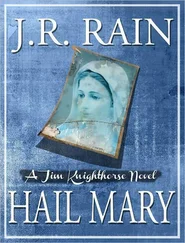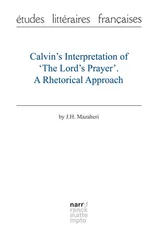Helge Fauskanger - J.R.R. Tolkien’s Lord’s prayer and Hail Mary in Quenya - Syntactical and Etymological Analysis
Здесь есть возможность читать онлайн «Helge Fauskanger - J.R.R. Tolkien’s Lord’s prayer and Hail Mary in Quenya - Syntactical and Etymological Analysis» весь текст электронной книги совершенно бесплатно (целиком полную версию без сокращений). В некоторых случаях можно слушать аудио, скачать через торрент в формате fb2 и присутствует краткое содержание. Жанр: Языкознание, на английском языке. Описание произведения, (предисловие) а так же отзывы посетителей доступны на портале библиотеки ЛибКат.
- Название:J.R.R. Tolkien’s Lord’s prayer and Hail Mary in Quenya: Syntactical and Etymological Analysis
- Автор:
- Жанр:
- Год:неизвестен
- ISBN:нет данных
- Рейтинг книги:5 / 5. Голосов: 1
-
Избранное:Добавить в избранное
- Отзывы:
-
Ваша оценка:
- 100
- 1
- 2
- 3
- 4
- 5
J.R.R. Tolkien’s Lord’s prayer and Hail Mary in Quenya: Syntactical and Etymological Analysis: краткое содержание, описание и аннотация
Предлагаем к чтению аннотацию, описание, краткое содержание или предисловие (зависит от того, что написал сам автор книги «J.R.R. Tolkien’s Lord’s prayer and Hail Mary in Quenya: Syntactical and Etymological Analysis»). Если вы не нашли необходимую информацию о книге — напишите в комментариях, мы постараемся отыскать её.
J.R.R. Tolkien’s Lord’s prayer and Hail Mary in Quenya: Syntactical and Etymological Analysis — читать онлайн бесплатно полную книгу (весь текст) целиком
Ниже представлен текст книги, разбитый по страницам. Система сохранения места последней прочитанной страницы, позволяет с удобством читать онлайн бесплатно книгу «J.R.R. Tolkien’s Lord’s prayer and Hail Mary in Quenya: Syntactical and Etymological Analysis», без необходимости каждый раз заново искать на чём Вы остановились. Поставьте закладку, и сможете в любой момент перейти на страницу, на которой закончили чтение.
Интервал:
Закладка:
nísi women , the nominative plural of nís woman . The plural of nísis also attested in MR:213, but there it appears as nissiinstead. Similar, though not wholly identical forms occur in the Etymologies . Under the stem ini- female , a Quenya noun ní female , woman is listed (LR:377). However, in the entry for the stem nî 1- woman (of which ini- seems to be a variant with stem-vowel prefixed) it is said that níwas an "archaic and poetic" word only, the current word for woman being rather nisor nisse, pl. nissiin both cases (LR:377). This agrees with the entries nis- (LR:378) and ndis- (LR:375). It is suggested that nis- is an elaboration of nî 1- and ini-, while ndis- is in turn a "strengthening" of nis-. In the entry ndis- (LR:375), Tolkien indicates that Q nisse woman comes from primitive ndis-sê. This might seem to indicate that an ending - sê(the precise meaning of which is difficult to pin down) has been added to the stem. On the other hand, we can also understand the primitive form as being * ndiS-ê , the doubling of the srepresenting a medial fortification; the primitive ending - êadded to this fortified stem would here be feminine. The formation of primitive ndis-sê woman from the stem ndis- is similar to bessê wife from the stem bes- (LR:352). Whatever the precise etymology, in this scenario the Quenya descendant of ndis-sêwas nisse, which was apparently normally shortened to nis. This would represent ** niss, the final ssbeing simplified to ssince Quenya cannot normally have a double consonant finally; but in the plural form nissi, where the double consonant was not final because of the plural ending, it naturally persists. So far we have discussed the scenario of the Etymologies . As already mentioned, in MR:213 the plural women is still nissi, but in this post-LotR source the singular is given as níswith a long vowel (as if it were influenced by the archaic word ní). The text of the Lord’s Prayer seems to presuppose the same singular, but here the plural is nísi, formed simply by adding the ending - i: there is no hint of any stem-variation. The plural nísiis most surprising, for a single intervocalic sought to become voiced to z, in turn becoming r. So why do we not see nís woman pl. ** nízi/ nírijust as we have olos dream pl. olozi/ oloriin UT:396? May Tolkien at this stage have imagined that níspl. nísirepresents earlier * níþpl. * níþi, since sfrom earlier þnever becomes z> r? (Cf. for instance nause imagination from older nauþe, LR:378 s.v. nowo-; no form ** nauze, ** naurearose, evidently because intervocalic swas voiced to z before þbecame s; the voicing rule had ceased to function when new s'es developed from þ.) If níswere to represent earlier Quenya * níþ, this would require that the primitive word had a shape quite different from what is suggested in the Etymologies . Whatever the case, the re-emergence of nissias the plural form in a late source (MR:213) would seem to indicate that Tolkien had changed his mind back again, reviving the plural he had used in the Etymologies . (Hence, writers should probably let the plural of nísbe nissirather than nísi.)
- o, a genitive ending here occurring thrice, in the words Eruo God’s , Eruanno of grace and mónalyo of thy womb (nominative forms Eru, # Eruanna, # mónalya– the latter two examples confirm that when it is added to a word ending in - a, the genitive suffix - odisplaces this final vowel; cf. Vardo, Calaciryoas the genitive of Varda, Calaciryain Namárië). According to WJ:368, this genitive ending is to be referred to the "ancient adverbial element" ho, the basic meaning of which seems to be from (the point of view being outside "the thing, place, or group [left]"; cf. the entry 3O from, away, from among, out of in the Etymologies , LR:360). The Quenya ending is said to descend from Primitive Quendian - hô, an enclitic suffixed to noun stems; this position was "the usual place for the simpler prepositional elements in PQ" (WJ:368). This - hôproduced Common Eldarin - ô, "since medial h was very early lost without trace in CE", and with the shortening of the long final vowels, the Quenya genitive ending - oarose. As explained by Tolkien in WJ:368-369, this genitive properly refers to point of origin more than "ownership" (for the latter, good Quenya would rather use the possessive-adjectival case in - va). It is often useful to bear in mind that the ending - odescends from an element meaning from , for sometimes this meaning can still be discerned in the use of the genitive in Quenya. In a phrase like i yáve mónalyo, the fruit of thy womb , the idea is obviously not that the womb somehow owns the "fruit", but that the "fruit" proceeded from the womb. (Cf. also the "ablativic" use of the genitive in the word Oiolossëo from Mount Everwhite in Namárië, though for from Quenya would normally use the regular ablative in - llo; see ulcullo).
ontaril, noun mother or more literally begetter , not previously attested but made up from familiar elements. In the Etymologies , a verb onta- beget is derived from the stem ono- of similar meaning (LR:379; this is evidently a stem-vowel prefixed variant of nô, which stem is also defined beget : LR:378). Onta- would represent primitive * ontâ- or * onotâ-; this is one of the cases where the ending - tâfunctions only as a verb-former and adds nothing to the meaning of the stem. Two derived agental nouns are actually listed in the Etymologies , ontaro begetter , parent and a corresponding feminine form ontare(the fact that the latter is said to be feminine evidently implies that ontarois masculine; the endings - oand - eare masculine/feminine counterparts in Quenya). Yet in his Hail Mary translation Tolkien did not use ontare, but an alternative feminine form ontaril. The feminine ending - ilis attested in only a few other Quenya words: amil mother derived from a stem am 1- (LR:348 – mamilin UT:191 is perhaps a hypocoristic variant) and tavaril female dryad from the stem táwar- (LR:391). Cf. also Old Noldorin khíril lady (LR:364 s.v. kher-). The simplest agental form in - ris perhaps not gender-specific: The primitive endings - roand - re(cf. WJ:371 regarding the former) were masculine and feminine, respectively, but they would have merged as - ralready in Common Eldarin, since final short - oand - ewere lost very early. However, the primitive endings also appeared in long variants - rôand - rê, and where they occurred the final vowel indicating gender would still be present in Quenya, though now short: Hence in the Etymologies the words for begetter / parent are ontarom. and ontaref. Even so, we have relatively few examples of nouns including the long masculine ending - ro(all of them in the Etymologies ), and the word ontareitself seems to be the sole example of the feminine ending - re. It may be that Tolkien decided to drop these endings and rather assume that the primitive personal/agental endings - ro(m.) and - re(f.) had merged as - rin Quenya, with no indication of sex; if it is desirable to express gender, one must add a secondary ending to - r, like masc. - onor fem. - il. (Cf. masc. tavaronand fem. tavarilas the words for dryad in LR:391 s.v. táwar-.) Hence we have ontarilas the word for begetter , mother in the text before us. – The plural gender-neutral word parents , ontari(evidently misread as "ontani" in LR:379) occurred in an early version of Treebeard’s greeting to Celeborn and Galadriel, but it was changed to nostarias in the published LotR, Tolkien later noting that nosta- means beget . (SD:73; in earlier "Qenya", this verb meant give birth instead; see LT1:272 or QL:66.) This change was made as LotR was being finished, suggesting that the Hail Mary translation predates this time – or we would perhaps have seen * nostarilinstead of ontaril. However, it should be noted that the stem ono- beget , give birth to was still valid in the post-LotR period, as is evident from WJ:413 reproducing a source dating from ca. 1960. Even so, the use of the word ontarilmay provide a hint that our text was written about the time Tolkien was finishing LotR (say, after the two first volumes had been published, but before he made some final, minute revisions in the last volume – like changing ontarito nostarias recorded in SD:73).
Читать дальшеИнтервал:
Закладка:
Похожие книги на «J.R.R. Tolkien’s Lord’s prayer and Hail Mary in Quenya: Syntactical and Etymological Analysis»
Представляем Вашему вниманию похожие книги на «J.R.R. Tolkien’s Lord’s prayer and Hail Mary in Quenya: Syntactical and Etymological Analysis» списком для выбора. Мы отобрали схожую по названию и смыслу литературу в надежде предоставить читателям больше вариантов отыскать новые, интересные, ещё непрочитанные произведения.
Обсуждение, отзывы о книге «J.R.R. Tolkien’s Lord’s prayer and Hail Mary in Quenya: Syntactical and Etymological Analysis» и просто собственные мнения читателей. Оставьте ваши комментарии, напишите, что Вы думаете о произведении, его смысле или главных героях. Укажите что конкретно понравилось, а что нет, и почему Вы так считаете.












